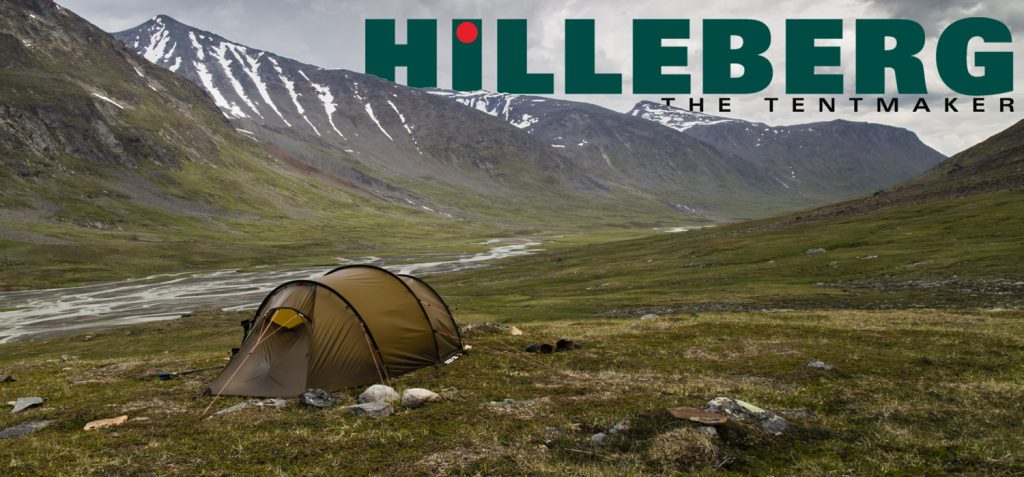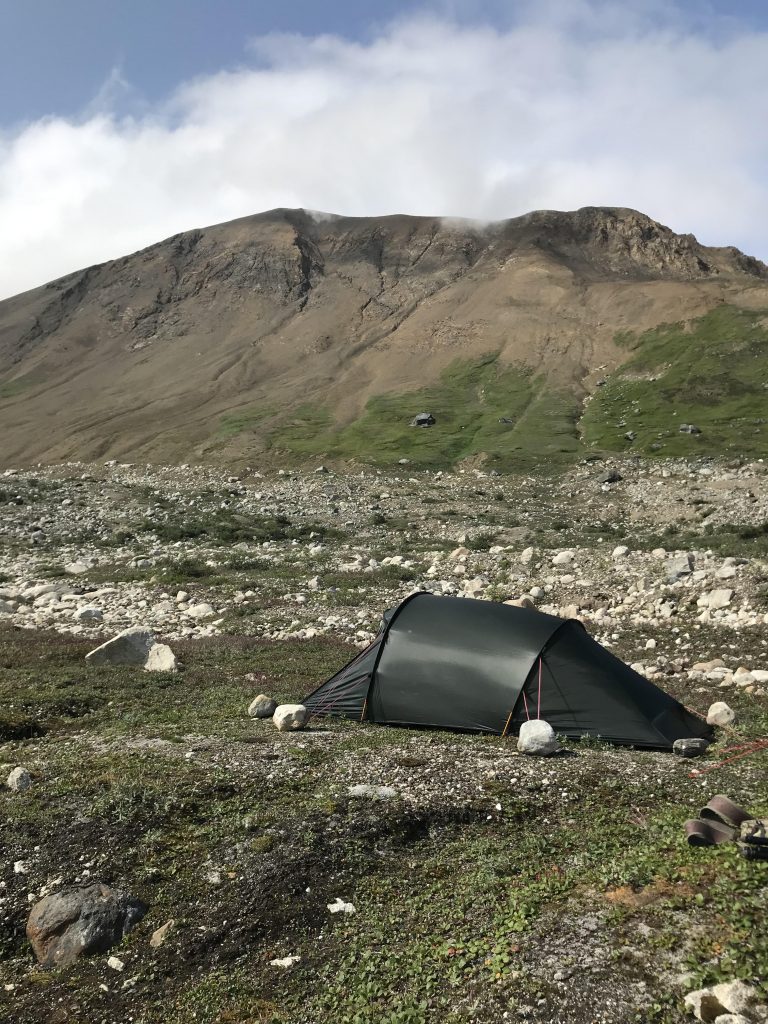Hilleberg - The Tentmaker

Hilleberg has been a top name in the tent making industry for over 45 years. Their mission is to produce the highest quality lightweight tents available. Hilleberg was founded in Sweden and has expanded to the US. I first heard about Hilleberg tents years ago, but didn’t purchase one of my own until last year. In all the trip reports and gear reviews that I’ve read about them, if I had to choose one word that is commonly used to describe them, it would be ‘bombproof’. They are on the expensive side, but it’s with good reason, and you get what you pay for with a Hilleberg tent.
CLASSES
Hilleberg has a tent model that will fit anyone’s style and need. They break their tent lineup into different ‘labels’, or recommended use categories based on the type of expedition and expected climate. They are categorized as follows:
- Yellow label: these tents are designed for warmer, snow-free climates where the primary requirement is lightweight.
- Red label: designed to be the lightest weight all-season tents that Hilleberg makes. This class of tents favors lightweight over pure strength. Intended for use in all but the very harshest of conditions.
- Black label: designed for the harshest conditions Mother Nature can throw at you. Uses heavier fabric than Yellow and Red label tents.
- Blue label: all-season tents, including a yurt-style option, intended for larger groups (6+).
MATERIAL
Hilleberg uses a fabric called Kerlon to make the outer portion of their tents, and Nylon for the inner portion. The different label families of tents use different weights of Kerlon fabric that dictate the recommended season usage. The Kerlon fabric must meet a specific tear strength, waterproofness, and a minimum color resistance to light. Kerlon fabric is coated on both sides, resulting in three layers of silicone. Yellow label tents use the lightest Kerlon with the lowest tear strength, and the Blue label tents are made from the heaviest Kerlon. The higher the Kerlon rating, the tougher it will be to tear the material, but at the penalty of being heavier. To test and verify the waterproofness of their fabrics, Hilleberg uses standards from the International Organization for Standardization (ISO). These rigid standards ensure that Hilleberg’s ratings are true, dependable ratings. Less reliable testing standards can produce inflated ratings that are not accurate. Since there is no tent industry waterproofing ‘standard’, Hilleberg uses the ISO method since it is recognized worldwide.
MAKING THE DECISION
When I was looking at buying my first Hilleberg, my main criteria was all-season protection at the lightest weight possible, so obviously I gravitated to the Red label family of tents. I was in the market for a new all season tent after having taken my 3-season North Face tent to Alaska for a sheep hunt. Luckily my tent held up for the duration of the hunt, but some days the wind would blow so hard that my tent would be pushed almost flat to the ground. I woke up one morning to the top of my tent almost brushing against my face. I don’t know how the poles didn’t snap, and there was a tent in camp whose poles did snap. When I was breaking down my tent to go home, I noticed that both of the poles had been permanently bent from the high winds. I knew that tent was out of its league and that I needed something better for next year. When I got home I started researching all season tents and it was obvious that a Hilleberg tent would fit the bill. I decided to get a 2-person tent that I could use alone and with a hunting partner for extreme terrain and weather. I liked the simple features and design of the Nallo 2. I debated between the Nallo 2 and the Nallo 2 GT (the GT models have extended vestibules), but in the end decided to go with the Nallo 2 as it had a smaller footprint. While the footprint of your tent probably isn’t one of your primary selection criteria, it is worth thinking about. Sometimes flat real estate on a mountainside can be hard to come by, so the less you need, the more options you’ll have for where to pitch your tent.

NALLO 2
As is the case with most tents, the Nallo 2 is cozy with 2 people. There isn’t hardly any room for gear inside the tent with two sleeping bags inside it, but I’ve found this to be the case with most backpacking tents. The vestibule of the Nallo 2 provides ample room for packs, boots, and anything else you don’t want to get wet. It has a single door/vestibule and room to sit up at the end where the door is; the opposite end of the tent slopes down to where your feet extend out when laying down. As I found out while sheep hunting and staying in the Nallo 2 by myself, there is ample room for all your gear inside the tent when you’re solo. At a listed weight of 5 pounds 5 ounces, it isn’t breaking the bank for all season protection from the elements. And if you’re going with a partner and can split the weight amongst yourselves, this tent is hard to beat for 2 person all season protection from the elements. I’ve found that the tunnel design of this tent helps it to shed wind really well too.
AKTO 1
After the 2019 hunting season, I decided I wanted to try out a 1 person tent. This would further reduce weight and bulk in my pack. I hunt by myself a lot, and even when I go with people, I tend to bring my own shelter because I’m a light sleeper and can get a better nights rest when I’m not sharing a tent. Hilleberg had failed to disappoint in any aspect, so I decided to go with their 1 person red label tent – the Akto. The Akto is a cozy 1-man tent with minimal room inside for gear, but it does have a decent sized vestibule to keep your pack, boots and gun/bow out of the rain.
The first thing I did when I got my new Akto was set it up in my backyard. I think this is a good way to become familiar with how to pitch your tent. All tents are different, and some are easier to pitch than others. I like to know exactly what I need to do and how to do it so that my tent is functioning at full capacity when pitched. I did this with the Akto, and the Nallo 2, as well as any other tent I’ve ever owned. You don’t want the first time pitching your tent to be in a storm on a mountainside, trying to figure out which pole goes where, which side is the door on, or where do all these stakes go?
PITCHING IN THE RAIN
One thing about Hilleberg tents that I have really come to appreciate is that the body of the tent and the rain fly are connected (but not permanently; they can be separated), so when you pitch the tent the rainfly is already in place and keeps the inner tent from being exposed to the elements. This means you can pitch your Hilleberg in a rainstorm and the inside of the tent will stay dry. This is something you probably don’t think much about unless you’ve pitched your tent in a storm before. Most likely before you could get the body erected and put the fly on, the inside of the tent was soaked. I’ve seen this happen before, and that tent was wet inside for days. Hilleberg has solved this problem, and it’s an under-appreciated perk of their tents. The inner body of their tents can be disconnected from the fly if desired, but it will come ready to pitch out of the box with the fly and body connected. The body can be removed and the fly used like a tarp to further reduce weight if desired (I’ve yet to try this with mine).
CONDENSATION
One thing people may be concerned about with a 4-season tent is condensation. While this a reality of tents with thicker material, I’ve never found it to be unbearable. I’ve used both the Nallo 2 and the Akto on sheep hunts in Alaska, among other places. Condensation did seem to be more prevalent in the Akto when in humid, wet environments, but I wasn’t surprised since it’s a one man tent. It doesn’t take much in a one man tent for condensation to form overnight; there just isn’t as much real estate in the tent and as you exhale all night you saturate the smaller area with water vapor from your breath. I think the Akto has a pretty good venting system: there is a vent at both the head and foot end to help circulate air and reduce condensation. There is also a vent at the top of the door in the body of the tent that has a mesh lining to keep bugs out.
FOOTPRINTS
I like to use a ground covering with my tents. I think it helps prolong the life of the tents floor, and also adds a layer of protection to prevent something sharp from poking a hole in your sleeping pad. Hilleberg makes ground cloths for their different tent models, but I’ve found that a sheet of Tyvek works great too. It is strong and very lightweight. One of the other reasons I like to pitch my tent in the backyard first is so that I can measure its dimensions and cut my Tyvek ground cloth. I will usually take an inch or two off each dimension of the tent when marking the outline for my ground cloth. I do this so that the Tyvek will be completely covered by the tent and won’t catch any water running off the rain fly.
CONCLUSION
Hilleberg has made me a believer of their tents. I really like the attention to detail that is apparent in the design and functionality of their tents. They are definitely on the expensive end of the tent spectrum, but it’s for a reason. Your shelter is not something you want to skimp on, you want to be ready for whatever Mother Nature has in store for you; it could literally save your life. Hilleberg has got you covered no matter what adventure you’re about to embark on!
-Ben Blakeley
